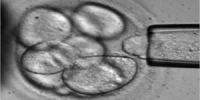Article
Biologics Have Long Road Ahead to Reach FDA Approval in Pain Management
Author(s):
While digital medicine and neuromodulation have gathered enough clinical evidence to treat chronic pain, Timothy R. Deer, MD, president and CEO of St. Francis Hospital's Center for Pain Relief, in Charleston, WV, said regenerative therapies like platelet-rich plasma, stem cells and biologics are lagging years behind in the testing realm with a long road to go.

While digital medicine and neuromodulation have gathered enough clinical evidence to treat chronic pain, Timothy R. Deer, MD, president and CEO of St. Francis Hospital’s Center for Pain Relief, in Charleston, WV, said regenerative therapies like platelet-rich plasma, stem cells and biologics are lagging years behind in the testing realm with a long road to go.
To enlighten pain medicine practitioners on those emerging, ultra-minimally invasive spinal therapies, Deer will moderate a scientific session on the topic at the 2013 American Academy of Pain Medicine annual meeting, held in Fort Lauderdale, FL, from April 12 to April 14.
Deer said clinicians who are interested in learning about the implications of biological matter for treating chronic pain but are not involved in research and development should wait until animal and human study data meeting FDA standards is released, but the issue is most clinical trials on stem cells are not presently conducted in the United States.
“Platelet-rich plasma treatments are approved in Europe, and many athletes have gone to Germany and had those done, so right now the focus is on sports medicine and sports injury, but I think there’s potential in non-healing joints and the mechanical spine,” Deer said. “The same is being said for stem cells, but there are many questions — ‘Where do they come from? Does it make a difference where they come from? Is there any reason it should work?’ — and all those answers can’t be given until FDA studies are conducted and concluded.”

While Deer said he is currently involved in multiple studies in Europe on the use of fibrin sealant to stop torn areas of spinal discs from leaking and further disrupting the spine, he noted that in terms of comparing the biological matter’s effectiveness in patient outcomes to platelet-rich plasma, “anyone who draws any conclusions forgets we haven’t proven that either helps any specific condition in the spine, and I don’t think you can compare them until we find out if there’s a benefit to either one.”
However, if safety and effectiveness of those emerging therapies are discovered in U.S. clinical trials and cost effectiveness is established, Deer said “it’s important to involve different physician societies and groups — like neurosurgery, pain medicine, and anesthesiology — to agree on it and seek coding from the federal government and (the Centers for Medicare & Medicaid Services) for reimbursement.”
“I’m hopeful the studies we’re discussing today lead to a pathway for approval for these treatments if they’re clinically effective and cost effective and reduce the need for opioids,” Deer said. “We’ve learned opioids are not cost effective, so if these therapies allow people to be pain free without high-dose, high-payment opioids, then I think any of these new treatments have good pathways to approval.”




